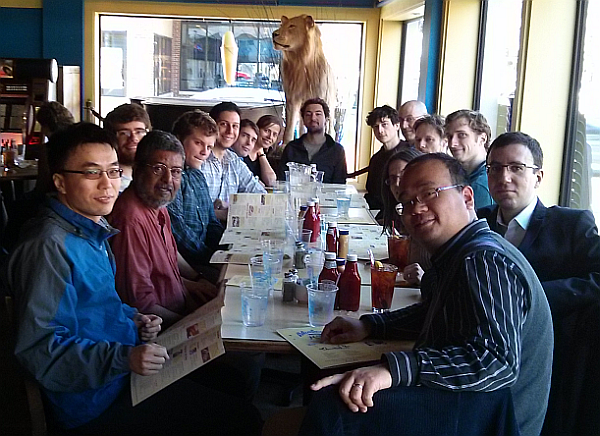

SCHEDULE
10:00 - 10:50
Location: Cupples I, Room 199
Abstract: I will discuss the classification problem of finite dimensional integrable systems. Then I will explain how a solution to this problem will lead to substantial progress in solving the isospectrality problem for quantum integrable systems (via semiclassical analysis). The isospectrality problem is still open, in most cases.
11:00 - 11:50
Location: Cupples I, Room 199
Abstract: In this talk, we will give a formula for the the Poincare polynomial of the quotient of a weakly symplectic Banach manifold by a Hamiltonian loop group action. This includes, for example, the moduli space of stable vector bundles over a Reimann surface. Based on joint work with Bott and Weitsman.
14:00 - 14:50
Location: Cupples I, Room 199
Abstract: Consider a Lie group acting properly on a manifold. In the literature, the orbit space of the action has been equipped with various definitions of "smooth structure" for the purpose of extending differential geometry/topology to this space. Examples include differential structures and diffeologies. However, these structures often forget certain invariants induced by the group action. Stacks, on the other hand, encode many of these invariants into the so-called quotient stack.
In this talk, I will show how any stack over manifolds has an underlying coarse moduli space equipped with a diffeology which, in the case of a geometric stack, corresponds to the orbit space of a representative Lie groupoid equipped with the quotient diffeology. Moreover, there is a fully faithful functor from diffeological spaces into stacks. This gives us a unifying category in which we can directly compare, in the case of a Lie group action for instance, information encoded by the diffeology versus information encoded by the quotient stack. Time permitting, I will give an example of one such invariant.
15:00 - 15:50
Location: Cupples I, Room 199
Abstract: The Hamilton--Pontryagin principle (Yoshimura and Marsden, 2006) simultaneously generalizes two important variational principles in geometric mechanics: Hamilton's action principle in Lagrangian mechanics, and Hamilton's phase space principle in Hamiltonian mechanics. We discuss an analog of this principle for discrete mechanics on Lie groupoids.
16:00 - 16:50
Location: Cupples I, Room 199
Abstract: We propose a definition of continuous time dynamical systems made up of interacting open subsystems. The interconnections of subsystems are coded by directed graphs. Our main result is that the appropriate maps of graphs called graph fibrations give rise to maps of the dynamical systems. Consequently surjective graph fibrations give rise to invariant subsystems and injective graph fibrations give rise to projections of dynamical systems. This is joint work with Lee DeVille.
Archived by Marie Taris. Contact Marie Taris for more details.
Contact Us | Home Page
Department of Mathematics | Washington University in St. Louis | One Brookings Drive, St. Louis, MO 63130-4899 |
contact@math.wustl.edu